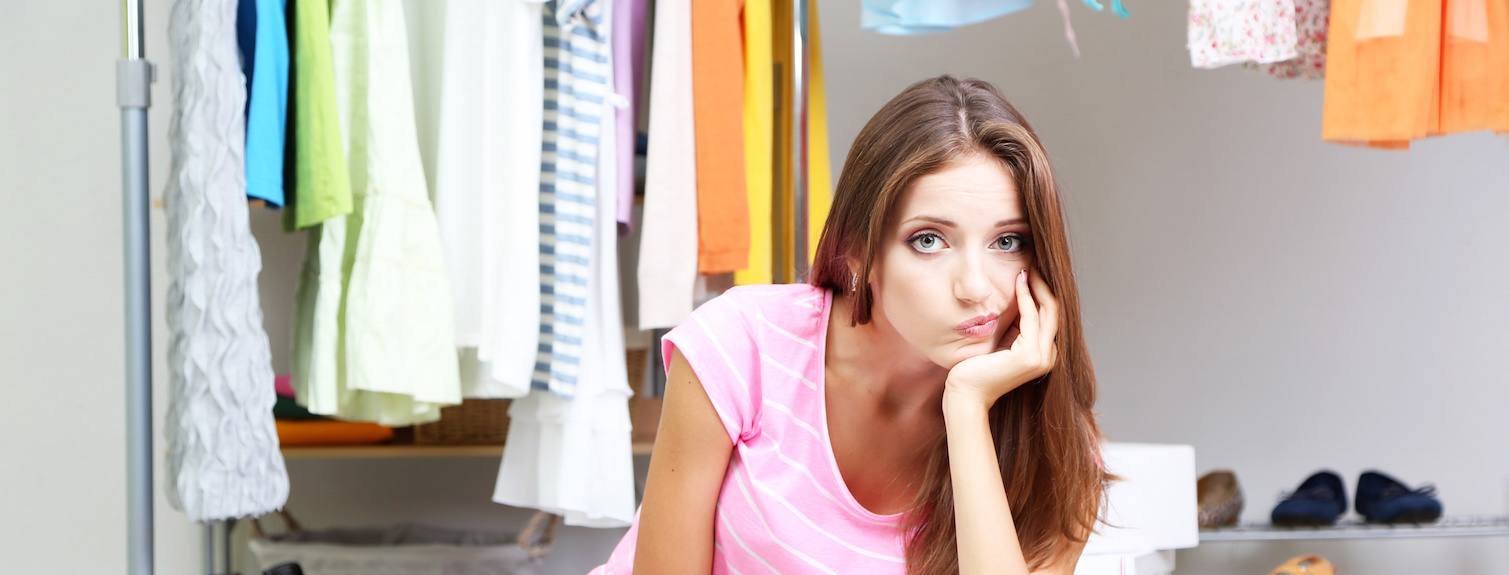
Here a few tips for your fall closet clean-out, including what you should keep, what you should buy and what you should get rid of. The weather is getting colder. Actually, it's really cold in Saskatoon right now, and finally time to put away your summer clothes and pull out your comfy knits and favourite pair of jeans. As you begin to swap out your seasonal clothing, set aside some extra time to clean out your entire closet. After all, you might discover you just have too much stuff. Many of us have our favourite pieces and others fall by the wayside, no matter the season! Here a few tips for your fall closet clean-out, including what you should keep, what you should buy and what you should get rid of.
Toss: Any Damaged or Unworn Items
We’ll start with what to toss. Inspect all your clothing carefully, whether it’s the summer shorts you’re putting away or the fall sweater you’re bringing out. Set aside anything that is damaged, stained or worn out. Next, identify items that you know you haven’t worn in months (or even years). They might have been in storage and you haven’t missed them, or they simply don’t fit your body or your style anymore. Before you head to the dumpster, consider donating your damaged and unwearable clothes to a textile recycling program. You can donate any clothes that are still in good condition to a thrift store or consign them for a little extra cash.
Keep: Your Standby Favorites
You might come across some pieces that you like, but you’re not totally sure about them. Use the “Hanger Test” strategy to test them out. While you are putting away and organizing your fall clothes, make sure all of your hangers are facing the same way. After you wear an item, put it back in the closet with the hanger facing the opposite way. At the end of the month or the season, you can see which items went unworn and are still hanging in their original way. Chances are you can get rid of these pieces without missing them. If you really don’t want to part with them, box them up and put them under your bed or in the attic or basement. If you’ve forgotten about them after 30 days, you don’t need them. After you have identified the pieces you no longer need, organize what you have left. Choose a system that works for you—arrange garments by colour, type or use, whatever fits your organizational style. Your clothes should be easy to find in your closet or dresser drawers so that you know what you are working with when you start to build outfits.
Buy: The Missing Essentials
Now that your closet is organized, take an inventory of everything so that you know what you have available to you. This way, it’s easier to spot gaps and see if you’re missing any pieces that are essential to your wardrobe. Buy new versions of basics you tossed, like that go-to pair of black pants that were worn out or your favorite white blouse that was stained. Pieces you do not need to replace yet include formal dresses, fast fashion trends that are likely to go out of style, and loud, flashy pieces you aren’t likely to wear often. Do your wallet a favor—and avoid having to get rid of more clothes next season—by shopping for long-lasting, high-quality, versatile basics at secondhand stores. Today, there are many online thrift stores where you can find like-new designer clothing at a big discount.
With an organized closet full of pieces that you wear regularly, you’ll feel more confident every day. Be sure to keep your closet stocked with the basics like jeans, simple tops and comfortable shoes, and you will be set for the season. You won’t be overwhelmed with options, and your closet will stay neat. Getting dressed every day might actually be fun!
Now that your closet is organized, take an inventory of everything so that you know what you have available to you. This way, it’s easier to spot gaps and see if you’re missing any pieces that are essential to your wardrobe. Buy new versions of basics you tossed, like that go-to pair of black pants that were worn out or your favorite white blouse that was stained. Pieces you do not need to replace yet include formal dresses, fast fashion trends that are likely to go out of style, and loud, flashy pieces you aren’t likely to wear often. Do your wallet a favor—and avoid having to get rid of more clothes next season—by shopping for long-lasting, high-quality, versatile basics at secondhand stores. Today, there are many online thrift stores where you can find like-new designer clothing at a big discount.
With an organized closet full of pieces that you wear regularly, you’ll feel more confident every day. Be sure to keep your closet stocked with the basics like jeans, simple tops and comfortable shoes, and you will be set for the season. You won’t be overwhelmed with options, and your closet will stay neat. Getting dressed every day might actually be fun!